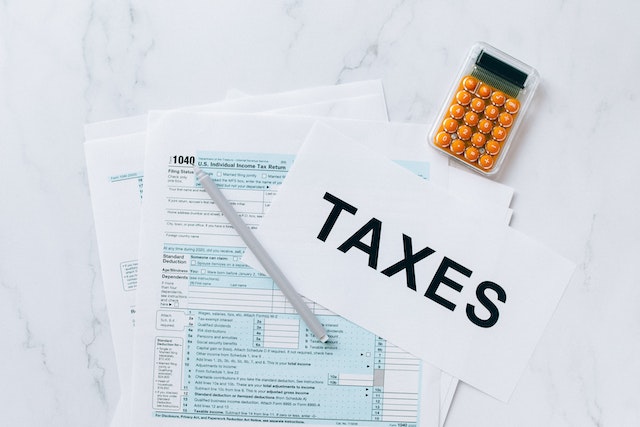Tag Taxes
Saving for college with a 529 plan

What is a 529 plan? The 529 plan is a tax-advantaged state-sponsored investment plan that allows parents to save for their children’s college expenses. In the past twenty years, college expenses have skyrocketed exponentially, putting many families in difficult situation.…
Understanding Bitcoin Tax Implications for Investors

In recent years, the rise of Bitcoin and other digital currencies has captured the attention of investors worldwide. With promises of decentralized finance and the potential for astronomical returns, these assets have garnered both excitement and skepticism. However, amidst the…
Tax-loss harvesting. How to maximize your after-tax returns.

What is tax-loss harvesting? Tax-loss harvesting (TLH) is a strategy that you, as an investor, can use to reduce your capital gains taxes and potentially maximize your future after-tax returns. The TLH strategy involves selling an investment in a taxable…
Smart Strategies for Reducing Taxes on Required Minimum Distributions

What is RMD? Required Minimum Distributions (RMDs) are mandatory withdrawals that individuals with tax-advantaged retirement accounts like Traditional IRAs, SEP IRAs, and 401k must take after reaching a certain age. These accounts come with certain tax advantages. Typical contributions are…
Know your tax brackets for 2024

There are seven federal tax brackets for the 2024 tax year: 10%, 12%, 22%, 24%, 32%, 35%, and 37%. Every year, the IRS modifies the tax brackets for inflation. Your specific bracket depends on your taxable income and filing status.…
Tax Saving Moves for 2023

1. Know your tax bracket The first step in managing your taxes is knowing your tax bracket. 2023 federal tax rates fall into the following brackets depending on your taxable income and filing status. Knowing where you land on the…
Planning for Retirement with Stock Options and RSUs: A Comprehensive Guide

Planning for Retirement with Stock Options and RSUs can be complex and overwhelming. Retirement planning is a crucial aspect of your financial independence. And for individuals fortunate enough to have stock options and Restricted Stock Units (RSUs) as part of…
Know your tax brackets for 2023

There are seven federal tax brackets for the 2023 tax year: 10%, 12%, 22%, 24%, 32%, 35%, and 37%. Every year the IRS modifies the tax brackets for inflation. Your specific bracket depends on your taxable income and filing status.…
Roth IRA and why you probably need one – Updated for 2022

Roth IRA is a tax-exempt investment account that allows you to make after-tax contributions to save for retirement. The Roth IRA has a tax-free status. It is a great way to save for retirement and meet your financial goals without…
Tax Saving Strategies for 2022

As we approach the end of 2022, I am sharing my favorite list of tax-saving ideas to help you lower your tax bill for 2022. In my experience, the US tax rules change frequently. 2022 was no exception. 2022 has…
Ten Successful tips for surviving a bear market

Surviving a bear market can be a treacherous task even for experienced investors. If you are a long-term investor, you know that the bear markets are common. Since 1945, there have been 14 bear markets—or about every 5.4 years. Experiencing…
Inflation is a tax and how to combat it

Inflation is a tax. Let me explain. Inflation reduces the purchasing power of your cash and earnings while simultaneously redistributing wealth to the federal government. When prices go up, we pay a higher sales tax at the grocery store, restaurants,…
Tax brackets for 2022

There are seven federal tax brackets for the 2022 tax year: 10%, 12%, 22%, 24%, 32%, 35% and 37%. Every year the IRS modifies the tax brackets for inflation. Your specific bracket depends on your taxable income and filing status.…
Choosing between RSUs and stock options in your job offer

RSUs and stock options are the most popular equity compensation forms by both early-stage start-ups and established companies. If you receive equity compensation from your employer, there is a good chance that you own a combination of different equity grants.…
Achieving tax alpha and higher after tax returns on your investments

What is tax alpha? Tax Alpha is the ability to achieve an additional return on your investments by taking advantage of a wide range of tax strategies as part of your comprehensive wealth management and financial planning. As you know,…
Step by Step Guide to Planning for Early Stock Option Exercise

Planning for Early Stock Option Exercise can be overwhelming and challenging. if you are one of the many employees of early-stage startups and private companies who receive equity compensation in the form of stock options and RSUs., this article will…
Effective Roth Conversion Strategies for Tax-Free Growth

Roth conversion of your tax-deferred retirement savings can be a brilliant move. Learn the must-know rules and tax implications of Roth Conversion before you decide if it is right for you. What is a Roth Conversion? Roth Conversion is the…
Tax Saving Ideas for 2021

As we approach the end of 2021, I am sharing my favorite list of tax-saving ideas that can help you lower your tax bill for 2021. In my practice, In the US tax rules change frequently. 2021 was no exception.…
Successful strategies for (NOT) timing the stock market

Timing the stock market is an enticing idea for many investors. However, even experienced investment professionals find it nearly impossible to predict the daily market swings, instant sector rotations, and ever-changing investors’ sentiments. The notion that you can perfectly sell…
Tax Saving Moves for 2020

As we approach the end year, we share our list of tax-saving moves for 2020. 2020 has been a challenging and eventful year. The global coronavirus outbreak changed the course of modern history. The Pandemic affected many families and small…
Contact Us

